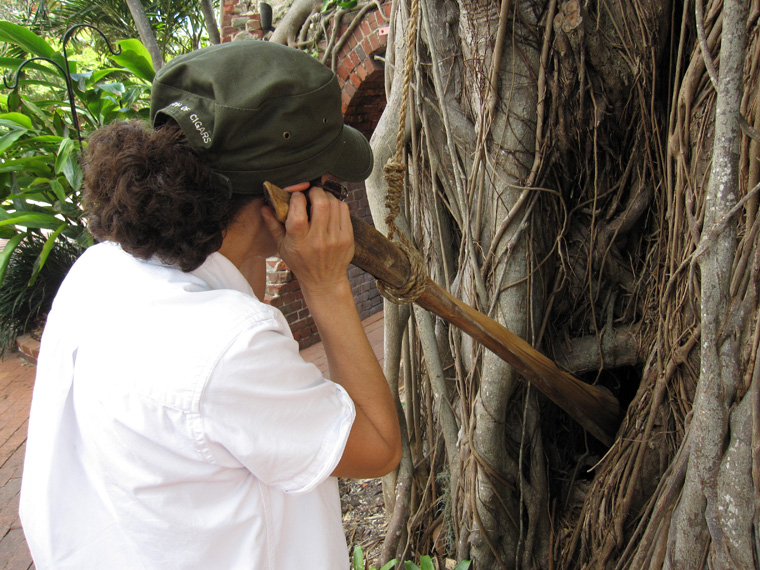Sound and Sight Walks
"There is a geographical quality to listening...Of all the senses, hearing most resembles a contraption some ingenious plumber has put together from spare parts. Its job is partly spatial...Sounds have to be located in space, identified by type, intensity, and other features." —Dianne Ackerman, A Natural History of the Senses
As cities and town become more crowded, noise pollution maybe so increased that sound quality might form the basis for retreats from the urban. (The concept
of the park as a quiet zone is not unthinkable.) Likewise, our busy lives often keep us on the move in our cars and other means of mechanical transport. To walk in nature is restorative. It encourages quietness, intimate communality and increased sensory perception. The ability to find moments of beauty in the everyday may increase our sense of joy in life, perhaps it will catalyze greater interest in the health of the planet.
I make my work in response to a kind of deep mapping - exploring and coalescing into sculptural form, the cultural and physical history of a place, including its geophysical formation, indigenous architecture, material culture and the materials its landscape yields. Robert Carl is a composer of new music. He has recently completed an variable sound piece, Collapsible Mandala, by listening and gathering sounds in Japan.
The Sound and Site Walk is based on contemplation of place with emphasis on its sounds and with the use of local plants formed into listening trumpets as the focusing element. We devised a "set of walks", pedestrian rambles whose paths allow participants to experience particular sound and sight environments that we selected. Indigenous plant, animal and mineral materials were employed to make a set of listening trumpets. As viewers/participants walked in the West Martello they discovered five sites in which the listening trumpets were installed. By placing their ear to the small end of the trumpet they could hear amplified sounds from insects, tree frogs, water lapping, and birdsong as intermixed, or separated from, the human-made sounds at the site. The trumpets were also used to isolate visual phenomena such as the play of light and shadow on particular surfaces. In one case we discovered one of the listening trumpets being used to make sounds, by using it as though it were an actual trumpet. We are interested in encouraging increased sensory perception in our viewers, by concentrating, focusing and isolating particular sounds and sights.
Designing an experience, sculpting or composing it, in such a way that viewers must walk to discover it is, in itself, an act overlaid with many intentions. Walking with a focus on listening invites a slower pace and increases sensory perception. The fact that the piece is a walk, and therefore dispersed in time and space, calls upon the viewer to remember all the parts in order to experience the whole. During these walks we engage in a kind of heightened perception. In experiencing sound as geographical, the process is one of assembling sound into an aural picture of the landscape. The ear acts as the conduit between the outer world and the inner realm of each individual. Intent and intense concentration on small visual fragments of great beauty in the environment can alter our perception of place and filter into our daily lives. The sights and sounds we are interested are often so woven into the fabric of the everyday as to be scarcely noticed. Of central concern in this work is a recognition of the importance of perceptual possibilites, of simple awareness. A cultivation of these facilities allows frequent conscious retreats from the usual patterns of our fast-paced lives, and supply nurture to the human need to break from the oftentimes mechanical rhythm of contemporary life. The sight and sound trumpets provide a way of cupping our ears and eyes to the earth.
listen to Robert Carl's Martello Mix














